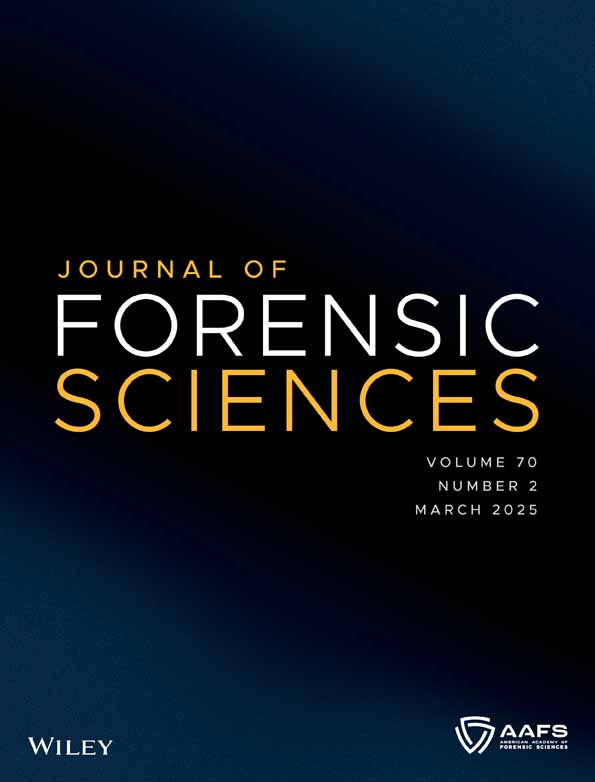The crucial role played by material trace analysis in resolving a murder vs. suicide dilemma
Abstract
In the case of a young woman's death by falling from the window of her boyfriend's sixth-floor apartment, investigators needed to determine whether the fall was suicidal or if the victim was forcibly pushed. The incident occurred at night, with her boyfriend being the only witness to how the fall happened. Establishing the origin of the material traces found on the woman's stockings and shoes, along with other clues, played a crucial role in resolving this dilemma. The traces found on the stockings and samples collected from the building's external wall were analyzed using digital stereomicroscopy, High-resolution scanning electron microscopy (HRSEM) coupled with energy dispersive X-ray spectroscopy (EDX), and optical microscopy. Chlorophyll presence on both the victim's stockings and the surface of the building façade was confirmed using Raman spectroscopy. The inorganic traces found on the shoes and the external wall were examined using stereomicroscopy and HRSEM coupled with EDX and were found to be similar in texture and elemental composition. The correspondence between the biological structures and mineral fragments, along with the dynamic friction marks found on the woman's body and shoes, confirmed physical contact between the victim and the external wall. These findings led to the conclusion that the victim struggled for her life and the fall resulted from a criminal act.




